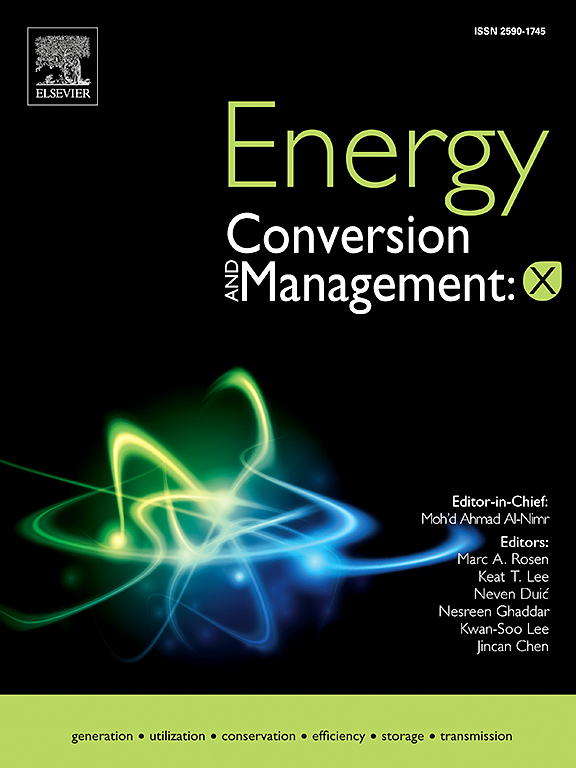Intelligent self-adaption of marine engine degradation based on a digital-twin model
IF 9.9
1区 工程技术
Q1 ENERGY & FUELS
引用次数: 0
Abstract
Marine engine performance would be degraded due to component wear and tear during long-term operation. The degradation might be further serious if the marine engine is fueled with low/zero-carbon fuels. This research introduces an innovative adaptive digital twin (DT) framework to predict engine performance degradation with control shift of fuel injection and air intake system, due to nozzle hole wear, fuel supply system malfunctions, and valve train wear. The framework is confirmed by a model-in-the-loop system with three steps: benchmark engine modeling, degradation simulation and inverse solution by NSGA III. In the first step, a second-order response surface model (RSM) with a radial basis function (RBF) kernel is developed as a benchmark DT model, using various engine performance data. Since the high cost of marine engine experiments, the engine data was enlarged based on a sophisticated engine model. This model is then used in the second step to perform as a degrading engine by changing some of the parameters. This would cause performance deviations between the benchmark DT model and the degrading engine. In the third step, the NSGA-III algorithm is utilized to compensate the inputs of benchmark DT model, so that those performance deviations can be adaptively corrected. The results indicated that input offsets are identified with an error less than 4% and outputs deviations are predicted with relative error less than 0.9% between the corresponding DT model and degrading engine, which offers a reliable solution for accurate performance monitoring and control.

基于数字孪生模型的船舶发动机退化智能自适应
船舶发动机在长期运行过程中,零部件的磨损会导致发动机性能下降。如果船用发动机使用低碳/零碳燃料,这种退化可能会进一步严重。本研究引入了一种创新的自适应数字孪生(DT)框架,用于预测由于喷管孔磨损、供油系统故障和气门机构磨损而导致的燃油喷射和进气系统控制位移导致的发动机性能下降。通过一个环中模型系统对该框架进行了验证,该系统分为基准发动机建模、退化仿真和NSGA III逆解三步。首先,利用各种发动机性能数据,建立具有径向基函数(RBF)核的二阶响应面模型(RSM)作为基准DT模型;由于船舶发动机实验成本高,需要基于复杂的发动机模型对实验数据进行放大。然后在第二步中使用该模型通过改变某些参数来作为退化发动机。这将导致基准DT模型和退化发动机之间的性能偏差。第三步,利用NSGA-III算法对基准DT模型的输入进行补偿,使这些性能偏差能够自适应校正。结果表明,相应的DT模型与退化发动机之间的输入偏移识别误差小于4%,输出偏差预测相对误差小于0.9%,为精确的性能监测和控制提供了可靠的解决方案。
本文章由计算机程序翻译,如有差异,请以英文原文为准。
求助全文
约1分钟内获得全文
求助全文
来源期刊

Energy Conversion and Management
工程技术-力学
CiteScore
19.00
自引率
11.50%
发文量
1304
审稿时长
17 days
期刊介绍:
The journal Energy Conversion and Management provides a forum for publishing original contributions and comprehensive technical review articles of interdisciplinary and original research on all important energy topics.
The topics considered include energy generation, utilization, conversion, storage, transmission, conservation, management and sustainability. These topics typically involve various types of energy such as mechanical, thermal, nuclear, chemical, electromagnetic, magnetic and electric. These energy types cover all known energy resources, including renewable resources (e.g., solar, bio, hydro, wind, geothermal and ocean energy), fossil fuels and nuclear resources.
 求助内容:
求助内容: 应助结果提醒方式:
应助结果提醒方式:


